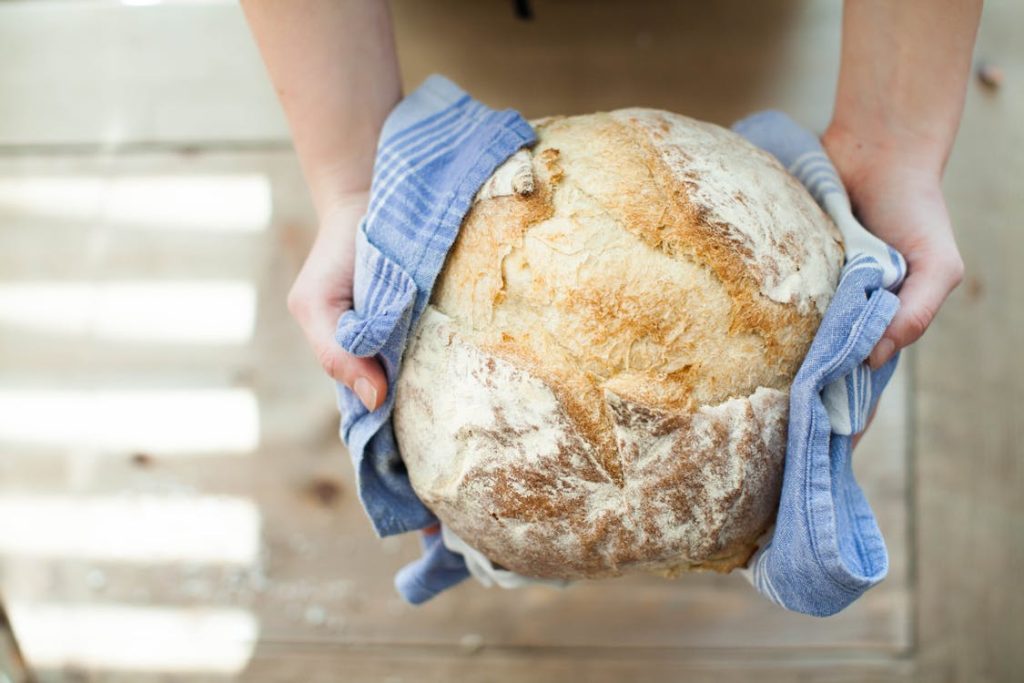All fields are required
Posted in Our Blog on May 29, 2024

Sourdough– It’s literally everywhere. TikTok, Facebook, Farmer’s Markets. I am shocked I don’t dream about it some days as much of it as I see in a days’ time. The big question is can we have sourdough starter safely in our homes? What can we do with it? What shouldn’t we do with it? It seems like a huge science to me. I have tried and failed twice at keeping mine “alive” and honestly, I felt like I was caring for a third child in my home while trying to maintain the sourdough starter, bake with the discard and still raise my little family.
I started to wonder how safe this really is when browsing Facebook one day and seeing a VERY moldy sourdough starter. I couldn’t get the thought out of my head and really it made me wonder if this was for me or if I should hang up my sourdough making apron.
Heading to the Google like I always do when I am curious about different things, I literally was met with a menagerie of tips about managing sourdough. I found many Food Safety Tips about sourdough from several websites but I thought having them all in one place would be a brilliant idea.
Apparently, these things all working together will create the safest sourdough starter. I found that I was too impatient, worried too much that something would become contaminated and felt that this sourdough business would be better suited for someone else in our area. Someone who could do the babysitting of the starter and the do the baking, too.
Sourdough starter that shows any sign of mold (colored and/or fuzzy) should NOT be used, and the container should be thoroughly cleaned and rinsed before starting over. Sourdough starter may develop a liquid layer that smells of alcohol, and this is fine. The liquid is a by-product of the fermenting yeast and can either be poured off or stirred in. A sourdough starter that is kept in the refrigerator and not fed regularly may develop whitish clumps on the surface of the liquid layer that are safe yeasts, but not mold.
But there is more! If you live at high altitudes, you have to adjust recipes and handling procedures.
How to know your sourdough starter is bad? One of the first signs of a dying sourdough starter is the smell. A healthy starter will smell musty and a little tangy, like smelling cheese or yogurt.
Rising and Falling Rate
The activity inside the starter jar also signals whether the yeast is alive or dying. That’s because fermentation exudes gas which makes the yeast rise.
So, if you notice the sourdough starter rising, it’s a good indication of its health.
However, note that activity in starters can vary based on the flour you’re feeding the starter. You’ll find that a starter rises more when you feed it with protein-rich white flour than whole wheat or rye.
Be consistent. Feed your starter at the same time every day.
If you spy a layer of liquid on top, known as “hooch,” don’t panic. It’s just the yeast saying it’s hungry and needs that well-deserved flour food.
When you begin your starter, don’t be alarmed if you don’t see any activity, like bubbles, for a few days. You may even see some bubbles one day and not the next.
Continue feeding your starter and they should return in a few days.
In closing, I feel that perhaps sourdough isn’t for me. It is mixing one of my favorite things which is science with one of my least favorite things, art. I love my time here at Make Food Safe and it has definitely raised my consciousness of food safety habits and handling of certain aspects of cooking, especially when making things that will be served to others. I am more aware of things that we purchase, how long to safely keep things and how to handle our own foods.